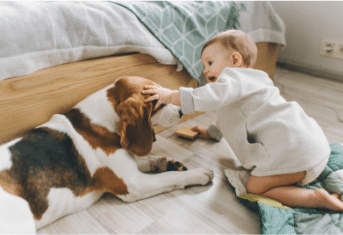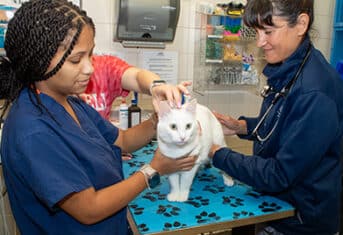How Cats are Helping Children with Autism

How Cats are Helping Children with Autism
June is Adopt a Shelter Cat month. Every year to celebrate, I devote my blogposts in the month of June to our furry, feline friends. June was chosen as Adopt a Shelter Cat month in part because kitten season is near its peak, and there are many kittens available for adoption in the summer and early fall. Today’s blogpost will focus on the benefits of pet cats for children with autism.
Much is said and written about dogs as man’s best friend and the health benefits of dog ownership. On the other hand, cats are billed as aloof and independent. But cats also have social and psychological benefits for their families, including psychological benefits for children with autism spectrum disorder (ASD).
How Cats Help Children with Autism
According to Autism Parenting Magazine, cats help children with ASD improve their social skills. Caring for a cat helps children with ASD learn empathy and compassion as well as teaching responsibility. Petting a cat relieves stress and anxiety not just for the child with ASD, but the whole family. Cats are nonjudgmental, allowing children with ASD to feel relaxed and to connect freely with their cat companion. The interaction between child and cat improves the child’s confidence and ability to interact socially with people. Cats have the additional advantage of being smaller than many service dogs and easier for a busy family to welcome into their home. Cats are quieter than dogs, which is advantageous for children with noise sensitivity due to ASD.
The Impact of Cats on Children with Autism
A recent exploratory study of children with ASD and cats from the Missouri University’s College of Veterinary Medicine Research Center for Human Animal Interaction found positive changes in the children over the 18 weeks following cat adoption. The families in the study were divided into two groups: one group of families immediately adopted a cat from a shelter, while the other group waited 18 weeks before adopting a similar cat. Following adoption of a cat, children showed more empathy and less separation anxiety, along with fewer problem behaviors. Parents and children reported strong bonds to the adopted cats.
Choosing the Right Cat for a Child with Autism
If this information makes you consider adopting a cat for your child with ASD, don’t rush to the animal shelter. The cats in this study were not random cats. Only cats aged 10 months to 4 years were selected because this age group has a stable personality and interacts well with children. All cats were temperament tested using the Feline Temperament Profile and achieved a score of >20 indicating they were docile cats. The families in the study were under the care of a university-based autism center and given access to a certified veterinary behaviorist to help promote a smooth transition of the cat from the shelter to a home. Check with your child’s care team before adopting a cat.
Despite that caveat, this study has a double positive outcome. Both the children and the cats benefited from adoption of a shelter cat into a home. What a perfect story for Adopt a Shelter Cat Month.

































